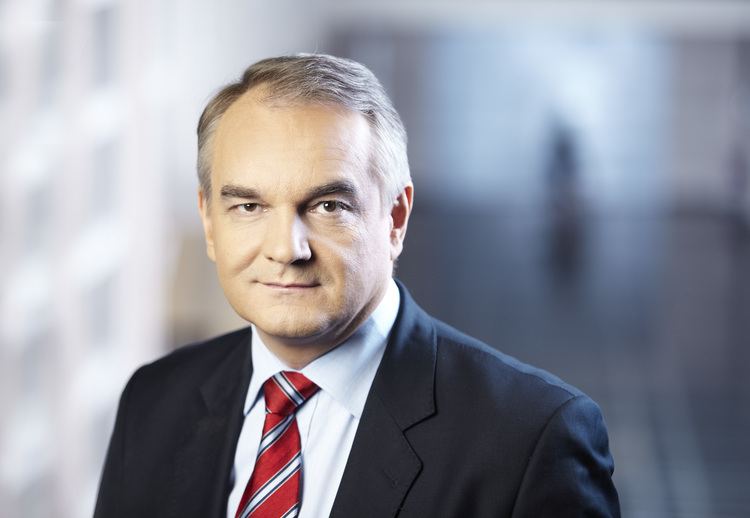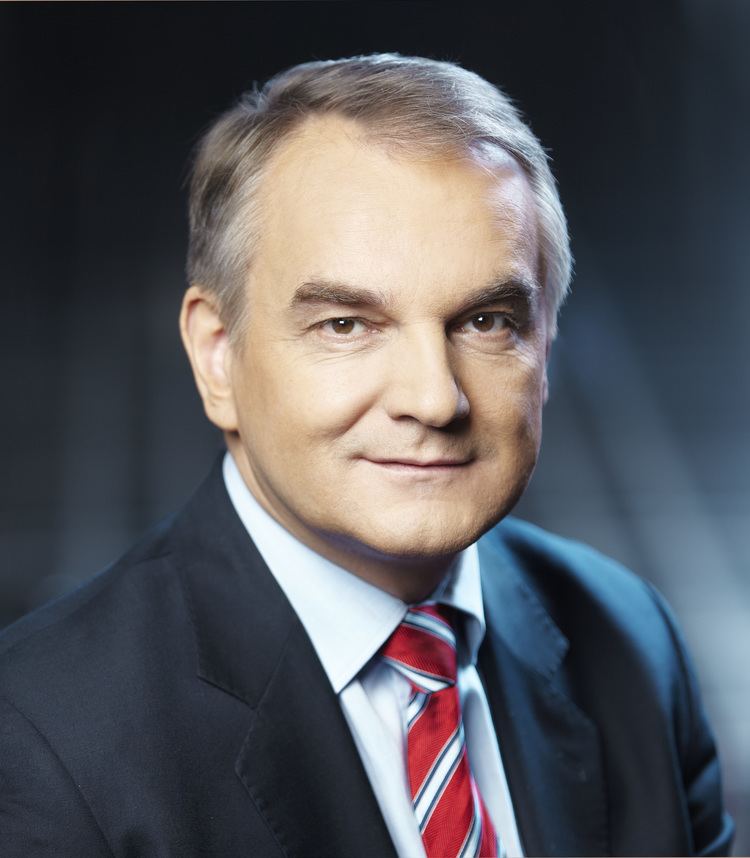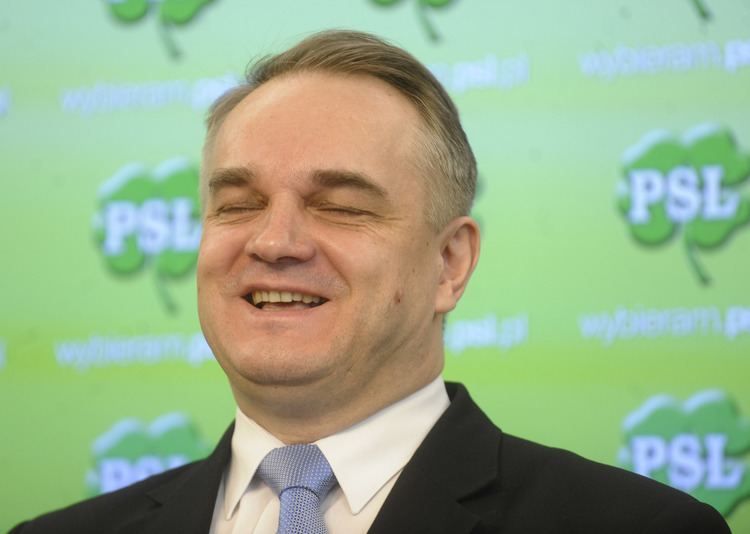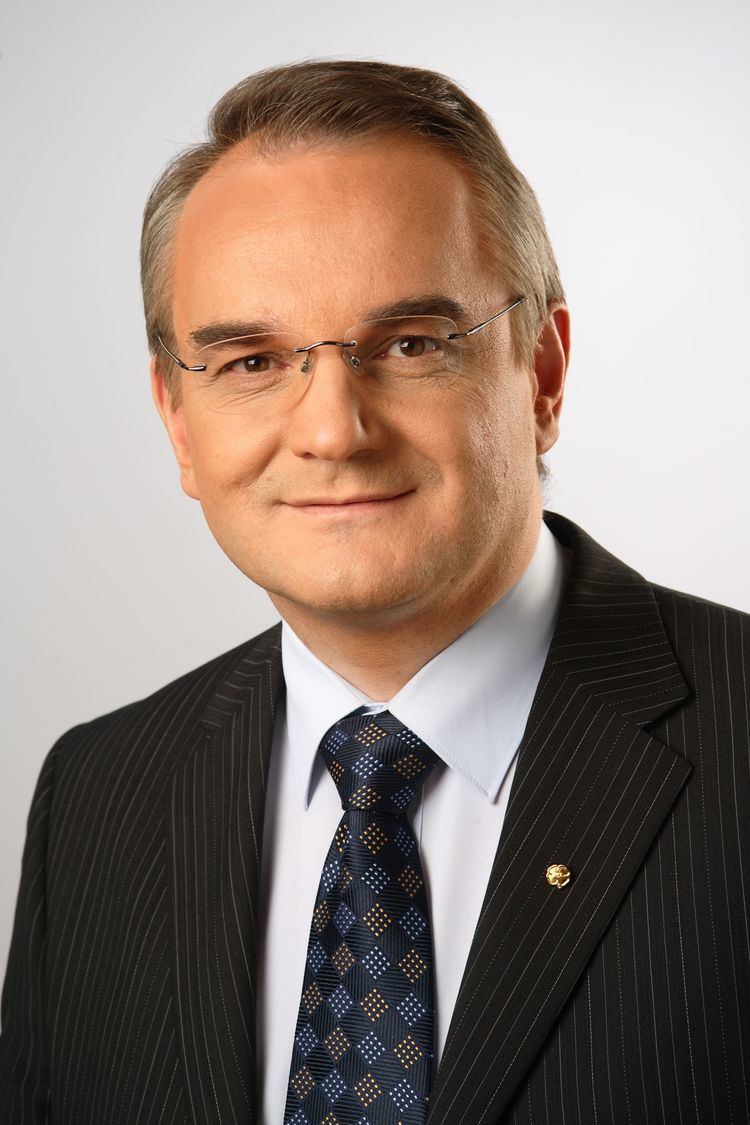President Lech Walesa Resigned March 6, 1995 President Lech Walesa | Succeeded by Jozef Oleksy Role Polish Politician Name Waldemar Pawlak | |
 | ||
Deputy Marek BorowskiWlodzimierz Cimoszewicz Spouse Elzbieta Pawlak (m. ?–2014) Partner Agnieszka Kaminska (2013–) Similar People Janusz Piechocinski, Marek Sawicki, Jan Bury, Grzegorz Napieralski, Hanna Suchocka | ||
Poland prime minister waldemar pawlak offers to resign
Waldemar Pawlak [valˈdɛmar ˈpavlak] (born 5 September 1959) is a Polish politician. He twice served as Prime Minister of Poland, briefly in 1992 and again from 1993 to 1995. From November 2007 to November 2012 he served as Deputy Prime Minister and the Minister of Economy. Pawlak is the only person who held the office of Prime Minister twice during the Third Republic (i.e. since 1989), and he remains Poland's youngest Prime Minister to date.
Contents
- Poland prime minister waldemar pawlak offers to resign
- What is Waldemar Pawlak Explain Waldemar Pawlak Define Waldemar Pawlak Meaning of Waldemar Pawlak
- Early life education and early political career
- First Premiership
- Second Premiership
- In the political wilderness
- Comeback
- Personal life
- Second Waldemar Pawlak cabinet
- References

He is also a long-time commander of the Polish Volunteer fire department, holding the rank of Brigadier General. Since 2015 Pawlak is workstream leader for the AMU (Agency for the Modernisation of Ukraine), where he contributes his expertise in economy.

What is Waldemar Pawlak? Explain Waldemar Pawlak, Define Waldemar Pawlak, Meaning of Waldemar Pawlak
Early life, education and early political career

Pawlak was born in the village of Model, Masovian Voivodeship on 5 September 1959. He is a graduate of the Warsaw University of Technology. While he was a student and during martial law in 1981 he actively participated in strikes.

After graduation (1984) he became a computer teacher in Kamionka (near Pacyna). His political career began in 1985, when he joined the United People's Party. After 1990, like many UPP members, he joined the UPP's successor, the Polish People's Party. He was elected from UPP office to the Contract Sejm (1989) and has remained a member of Sejm since then. He became leader (Prezes) of the UPP in 1991.
First Premiership
His first premiership (5 June - 7 July 1992) was the briefest government during this period, lasting only 33 days. This was, however, a notable period, known commonly as Pawlak's 33 days (33 dni Pawlaka).
After the downfall of Jan Olszewski's cabinet, Pawlak, a leader of the agrarian Polish People's Party, was named the new Prime Minister by President Lech Wałęsa with the mission to form a new coalition government including agrarians, Christian democrats and liberals.
However, the Pawlak government failed to gain support from the Sejm majority and failed in a vote of confidence. Pawlak resigned, and the president replaced him with Hanna Suchocka, who won majority support.
Because the cabinet did not receive support from the Sejm, Pawlak had no official ministers at this time, only temporary chiefs of executive branches.
Second Premiership
The Polish People's Party and the social democratic, post-communist Democratic Left Alliance (SLD) won the 1993 election in a landslide, holding a super-majority and the support of the socialist-agrarian government, with Pawlak as Prime Minister again.
Józef Oleksy of the SLD became Sejm Marshal, while SLD leader Aleksander Kwaśniewski remained a Sejm Member without portfolio.
Prime Minister Pawlak and Kwaśniewski soon found themselves at bitter political odds. Kwaśniewski reportedly had an ambition to become "Prime Minister de facto", while Pawlak wanted to retain the power of his office. Both leaders used their parties to fight for power.
Pawlak was initially in an informal alliance with President Wałęsa against the SLD. However, their good political relations soon dissipated.
In 1995 Pawlak offered three options to Kwaśniewski. First: he would remain Prime Minister but with Kwaśniewski as Deputy and Minister of Foreign Affairs. Second: the SLD would form a government with Kwaśniewski as Prime Minister. Third: Oleksy would become Prime Minister under the present coalition. Pawlak reportedly thought that Kwaśniewski would not risk a minority SLD government without the support of the majority or the elevation of his main partisan opponent, Oleksy, to Prime Minister and therefore rather be the deputy of Pawlak. However Kwaśniewski surprised many by choosing the third option.
In the political wilderness
Despite good public approval ratings Pawlak failed in his bid for the Presidency in 1995, finishing a distant fifth (after Kwaśniewski, Wałęsa, Jacek Kuroń and Jan Olszewski) and winning only 770,417 votes (4.31%).
After losing the political battle with Kwaśniewski and, after that, the presidential election, there was a movement to replace Pawlak with Jarosław Kalinowski as party leader in 1997.
PSL suffered a great political disaster during the 1997 parliamentary elections and became the smallest party in the Sejm (from 132 seats in 1993 to just 27).
After the SLD won decisively in the 2001 parliamentary election Kalinowski became deputy of the new Prime Minister Leszek Miller when the PSL joined the coalition. Pawlak did not play a major role during this period.
Comeback
Pawlak's comeback began in 2005 when he became PSL leader again.
In the liberal Civic Platform (PO)-PSL government, formed after the 2007 parliamentary election, Pawlak became Deputy Prime Minister and Minister of Economy under Prime Minister Donald Tusk.
Although PSL remained the smallest party represented in the Sejm, Pawlak is often cited as having achieved a major political victory. During his time in the party chair his party enjoyed better electoral results, the elimination of major competition among agrarian voters from the also agrarian dominated party (Samoobrona), and the resumption of major influence in rural areas. Additionally, PSL was put in charge of three cabinet posts in the Tusk government. (Without the PSL votes, the PO would not have a Sejm majority, even though it easily accounts for the biggest political group in the sitting parliament.)
On 21 April 2010, PSL announced that Pawlak would be the party's official candidate for the 2010 presidential election. He received only 1.75% of the vote and didn't get into the second round.
Personal life
Pawlak is married and has children.
Second Waldemar Pawlak cabinet
Members of Pawlak's cabinet:
